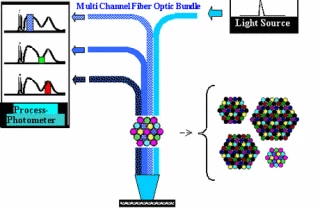Fiber Cables and Bundles
Frequently Asked Questions
What is a fiber cable?
A fiber cable, also known as an optical fiber cable, is a type of cable consisting of one or more optical fibers that are used to transmit digital signals, such as those used in telecommunications and data networking.
What is the difference between single-mode and multimode fiber cables?
Single-mode fiber cables have a smaller core diameter and allow only one mode of light to propagate through the fiber, resulting in less signal attenuation and higher bandwidth over longer distances. Multi-mode fiber cables have a larger core diameter and allow multiple modes of light to propagate through the fiber, resulting in higher signal attenuation and lower bandwidth over shorter distances.
What is fiber bundle?
A fiber bundle is a collection of optical fibers that are bundled together to form a larger cable. Fiber bundles are often used in medical imaging applications, where they allow for flexible light delivery to an endoscope or other medical device.
What is the cladding on a fiber cable?
The cladding on a fiber cable is a layer of material surrounding the core of the cable, which helps to keep the light signals confined within the core and prevent them from leaking out.
What is the numerical aperture of a fiber cable?
The numerical aperture of a fiber cable is a measure of the light-gathering ability of the cable. It is determined by the refractive index of the core and the cladding, and is used to calculate the maximum angle at which light can enter the core of the cable.
What is fiber optic attenuation and how is it measured?
Fiber optic attenuation is the loss of signal strength as light travels through a fiber optic cable. It is measured in decibels (dB) and can be caused by a variety of factors, including scattering, absorption, and bending losses. Attenuation can be measured using an optical time-domain reflectometer (OTDR) or a power meter and a light source.
What is a fiber optic patch cable?
A fiber optic patch cable is a short length of fiber cable with connectors on both ends, used to connect optical devices such as routers, switches, and servers. They are often used in data centers and other high-bandwidth applications.
What is dispersion in a fiber cable?
Dispersion is the broadening of a light pulse as it travels through a fiber cable, caused by differences in the speed at which different wavelengths of light travel through the cable. This can cause distortion and reduce the quality of the signal being transmitted.
Find the perfect Fiber Cables & Bundles for your optical application from over 120 suppliers worldwide. Discover a vast selection of single mode and multimode fiber optic cables, as well as bundled fiber optic cables, with customizable options for length, connectors, and jacketing. Whether you need high-performance fiber optic cables for communication, sensing, or spectroscopy, our suppliers offer a variety of options to meet your needs.




